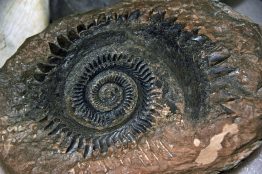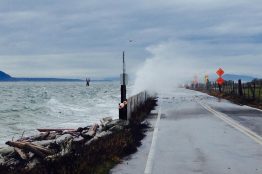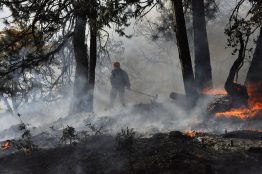Less than three months into its mission, NASA’s Ice, Cloud and land Elevation Satellite-2, or ICESat-2, is already exceeding scientists’ expectations. The satellite is measuring the height of sea ice to within an inch, tracing the terrain of previously unmapped Antarctic valleys and measuring other interesting features in our planet’s elevation. Benjamin Smith, a glaciologist with the University of Washington and member of the ICESat-2 science team, shared the first look at the satellite’s performance at the American Geophysical Union’s annual meeting Dec.
Read more at UW Today »Biggest extinction in Earth’s history caused by global warming leaving ocean animals gasping for breath
In some ways, the planet's worst mass extinction — 250 million years ago — may parallel climate change today.
Read more at UW Today »Washington’s state climatologist predicts this will be an El Niño year
Nick Bond is a University of Washington associate professor of atmospheric sciences who studies the link between ocean and atmosphere. He also serves as the state climatologist for Washington. Early reports suggest that the winter of 2018/2019 will be a weak to moderate El Niño year. For the Pacific Northwest, that probably means less snow in the mountains than the average.
Read more at UW Today »UW, Tableau create interactive tool to explore more than a century of Pacific Northwest weather observations
UW College of the Environment and Seattle visual analytics company Tableau Software teamed up to create a new, interactive visualization for historical observations of temperature and precipitation in Washington, Oregon, Idaho and western Montana, and for Washington snowpack. The free online tool lets anybody interact with the records going back as far as 1881 and look for significant trends. “This tool lets anyone, from researchers to meteorologists to members of the public, look at the actual data to motivate why we should care about our climate changing, and see how it is changing in our own backyard,” said project lead Karin Bumbaco, the assistant state climatologist for Washington.
Read more at UW Today »New resources support tribes in preparing for climate change
As the natural world responds to climate change, American Indian tribes across the country are grappling with how to plan for a future that balances inevitable change with protecting the resources vital to their cultural traditions. The University of Washington Climate Impacts Group and regional tribal partners have developed a collection of resources that may be useful to tribes at any stage in the process of evaluating their vulnerability to climate change.
Read more at UW Today »





